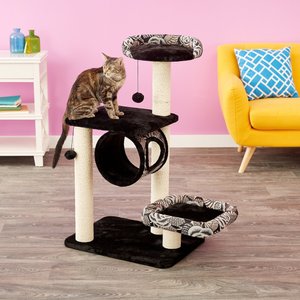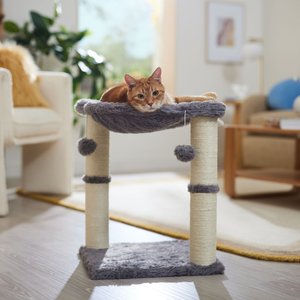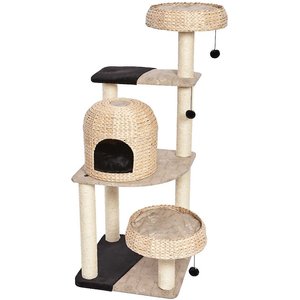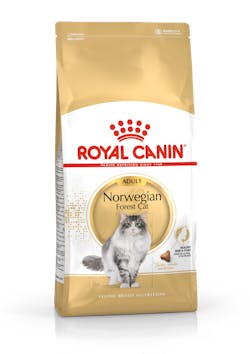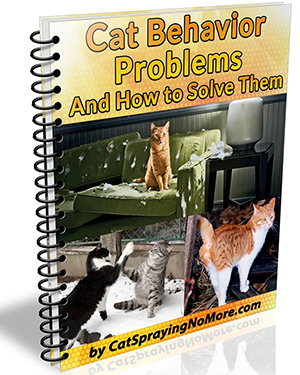Monthly Archives: April 2023
iHeartCats Second Chance Movement 04-09-2023
Great News
Hello actually I wanted to show you a great achievement from a very nice site with a cause we believe in. Got an email yesterday on how they rescued by moving 46 at risk cats in Louisiana.

Hey –
WOW! We are blown away by your generosity and support in helping us fly 46 at-risk shelter cats to safety by Easter. Thanks to your amazing donations and purchases, we are already halfway to our goal and we couldn’t be more thrilled!
These 46 cats are facing a heartbreaking situation in an overcrowded shelter in Louisiana, where they are experiencing an unexpected surge of abandonments and surrenders. Their owners simply can’t provide for them anymore. But there is hope! A shelter in Wisconsin is able to take in these adoptable pets, if we can transport these cats on Easter, April 9th.
We need a miracle to make this happen, and that’s where you come in. Without your support, we simply can’t take off.
We still have halfway to go, but with your continued support, we know we can make this happen. Let’s band together to give these cats the second chance they deserve. If you haven’t already you can help by shopping the collection below or donating directly.
Thank you from the bottom of our hearts for your incredible generosity and support. Together, we can make a real difference.
why do cats like cat trees
Cats are known to be incredibly active and curious creatures, always on the lookout for new adventures and opportunities to explore their surroundings. This is why it’s important for cat owners to provide their feline companions with stimulating environments that allow them to engage in their natural behaviors. One popular solution to this need is the cat tree.
A cat tree, also known as a cat condo, is a vertical structure with multiple levels and features that simulate the experience of being high up in a tree. These structures typically have various platforms, perches, and cubbies for cats to climb, scratch, and play on. Some also include toys, dangling ropes, and other features to enhance the play experience.
So why do cats love cat trees so much? There are a few reasons:
Height
Cats love being up high, and cat trees provide them with the opportunity to climb to their heart’s content. Being elevated gives them a sense of security, as they can survey their surroundings and keep an eye out for any potential threats. Additionally, cats are natural climbers, and climbing helps them maintain their balance, agility, and coordination.
Scratching
Cats have a natural instinct to scratch, and they need an appropriate outlet for this behavior. Cat trees often come equipped with scratching posts or pads, which provide cats with a safe and appropriate surface to scratch on. This not only helps to keep their claws healthy and strong but also prevents them from scratching on furniture, walls, or other inappropriate surfaces.
Play
Cats are playful animals, and they need plenty of opportunities to engage in play. Cat trees often come with various toys and features that allow cats to play, pounce, and swat to their heart’s content. This helps to keep them mentally and physically stimulated, preventing boredom and promoting good behavior.
Privacy
While cats are social animals, they also need their alone time. Cat trees often have cabbies or enclosed spaces where cats can retreat for some peace and quiet. This provides them with a sense of security and privacy, which is essential for their overall well-being. Especially if they have condos built with in the cat tree.
Exercise
Cats need exercise just like humans do, and cat trees provide them with an excellent way to get moving. Climbing, jumping, and playing on a cat tree can help to keep cats active and healthy, preventing obesity and other health issues.
Territorial Marking
Cats are territorial animals, and they need to mark their space with their scent. Cat trees provide an excellent opportunity for cats to mark their territory, as they can rub their scent on various surfaces and leave their mark on the tree.
Comfort
Finally, cat trees provide cats with a comfortable place to relax and rest. The various platforms and perches on the tree provide cats with a cozy spot to curl up and take a nap. Additionally, the soft materials used to construct the tree provide a comfortable surface for cats to rest on.
In conclusion, cat trees are an excellent investment for cat owners looking to provide their feline companions with a stimulating and engaging environment. By providing cats with a place to climb, scratch, play, rest, and mark their territory, cat trees help to keep cats happy, healthy, and well-behaved. Whether you have a high-energy kitten or a laid-back senior cat, a cat tree is sure to be a hit with your furry friend.
Check out the following cat trees for your cat.
Small Cat Tree
Medium Cat tree with condos
Large Cat tree with condos
This content may contain links to products, software and services. Please assume all such links are affiliate links which may result in my earning commissions and fees.
Maine Coon vs. Norwegian Forest Cat: Which Is the Right Cat for You?
Cats are one of the most beloved pets around the world. They come in different breeds, each with their unique set of traits, personalities, and physical appearances. Two of the most popular cat breeds are the Maine Coon and the Norwegian Forest Cat. Both of these breeds have a long history and are known for their beauty, intelligence, and affectionate nature.
But how do you choose between these two wonderful breeds? In this article, we will explore the similarities and differences between Maine Coons and Norwegian Forest Cats to help you decide which one is the right fit for you.
Maine Coon vs. Norwegian Forest Cat
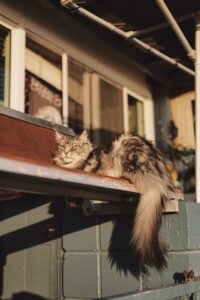
Maine Coon Picture by Photo by diego santiago: https://www.pexels.com/photo/close-up-photo-of-a-furry-cat-12032429/
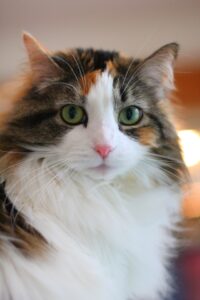
Norwegian Forest Cat Photo by Maverick F: https://www.pexels.com/photo/close-up-photo-of-a-furry-cat-10819606/
Origins
The Maine Coon and the Norwegian Forest Cat are both native to cold, northern climates, and have been around for centuries. The Maine Coon is believed to have originated in the state of Maine in the United States, where it was a popular barn cat due to its excellent hunting skills. There are many stories about how the Maine Coon came to be, but the most common is that they are a cross between domestic cats and raccoons, which is impossible biologically. Another theory suggests that they are the descendants of cats that traveled with Vikings who visited the Americas.
The Norwegian Forest Cat, on the other hand, is believed to have originated in Norway and was used as a working cat on farms and in the forests. These cats were known for their excellent hunting skills and their ability to survive in harsh weather conditions. They were also used by the Vikings to control the rodent population on their ships.
Physical Appearance
Maine Coons and Norwegian Forest Cats are both large, muscular cats, with long, fluffy coats, and a distinct appearance.
The Maine Coon has a broad, rectangular head with tufted ears and large, expressive eyes. They have a long, sturdy body with a bushy tail, and their coat is thick and shaggy, with a distinct ruff around the neck. They come in various colors, including brown tabby, black, and white. But the tail would look more like it has rings similar to a raccoon’s tail.
The Norwegian Forest Cat, on the other hand, has a triangular head with large, almond-shaped eyes. They have a long, sturdy body with a bushy tail, and their coat is thick and shaggy, with a distinct ruff around the neck. They come in various colors, including brown tabby, black, and white, and their coat may also have silver or golden highlights.
While both breeds have a similar appearance, the Maine Coon is generally larger than the Norwegian Forest Cat. Male Maine Coons can weigh up to 20 pounds, while the Norwegian Forest Cat’s average weight is around 12-16 pounds.
Personality and Temperament
Both the Maine Coon and the Norwegian Forest Cat are known for their friendly, affectionate, and playful nature. They are intelligent cats that enjoy interacting with their owners and are known to be loyal and devoted pets.
The Maine Coon is often described as the “gentle giant” of the cat world, as they are known for their calm and relaxed demeanor. They are also highly social and enjoy spending time with their owners, as well as with other cats and pets in the household.
The Norwegian Forest Cat, on the other hand, is known for its independent and curious nature. They are highly active cats that enjoy exploring their surroundings, but they also love to spend time with their owners. They are known to be playful and affectionate and are a great fit for families with children and other pets.
Health and Care
Both the Maine Coon and the Norwegian Forest Cat are generally healthy breeds with a long lifespan, but they may be prone to certain health conditions.
The Maine Coon may be susceptible to hip dysplasia, which is a genetic condition that affects the hip joints and can cause pain and mobility issues. They may also be prone to heart disease, particularly hypertrophic cardiomyopathy, which can lead to heart failure. It’s important to have regular checkups with a veterinarian to catch these conditions early.
The Norwegian Forest Cat may be prone to a genetic condition called glycogen storage disease type IV, which can lead to liver failure. They may also be susceptible to hip dysplasia, as well as a condition called polycystic kidney disease, which can lead to kidney failure. Regular vet checkups and genetic testing can help catch and manage these conditions.
Both breeds have long, thick coats that require regular grooming to prevent matting and hairballs. They should be brushed at least once a week and may need to be bathed occasionally. It’s also important to keep their nails trimmed and teeth clean to prevent dental issues.
Which Is Right for You?
Choosing between a Maine Coon and a Norwegian Forest Cat ultimately depends on your lifestyle and preferences. If you’re looking for a larger cat that’s laid back and affectionate, the Maine Coon may be the right choice. They are great for families with children and other pets and are known for their calm and relaxed demeanor.
If you’re looking for a more independent and active cat that loves to explore, the Norwegian Forest Cat may be the right choice. They are great for families with children and other pets and are known for their playful and curious nature.
Both breeds require regular grooming and vet checkups, and may be prone to certain health conditions. It’s important to do your research and choose a reputable breeder or rescue organization to ensure that you are getting a healthy and well-socialized cat.
In conclusion, both the Maine Coon and the Norwegian Forest Cat are wonderful breeds that make great pets for the right person. They have unique traits and personalities, and it’s important to consider your lifestyle and preferences when choosing between them. Whether you choose a Maine Coon or a Norwegian Forest Cat, you’re sure to have a loyal and loving companion for years to come.
Note we are bias for the Maine Coon since we are inspired by a half Maine coon cat.
Food suggestions for Maine Coon
Royal Canin Feline Breed Nutrition Maine Coon Kitten Dry Cat Food, 3-lb bag
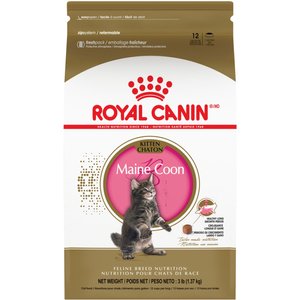
Food suggestions for Norwegian Forest Cat
Royal Canin Feline Care Nutrition Digestive Care Dry Cat Food, 6-lb bag
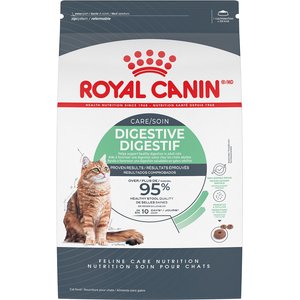
Also Check out Norwegian Forest Cat Adult by Royal Canin
Regardless of which cat you get a Maine Coon or a Norwegian Forest Cat you should get the following guides.
This content may contain links to products, software and services. Please assume all such links are affiliate links which may result in my earning commissions and fees.
Why do cats meow in the morning
Cats are mysterious creatures, and sometimes their behaviors can be puzzling to their owners. One such behavior that many cat owners have experienced is morning meowing. If you are a cat owner, you might have woken up to the sound of your feline friend meowing loudly, often before dawn. This behavior can be both adorable and annoying, but have you ever wondered why cats meow in the morning? In this article, we will explore the reasons behind this behavior.
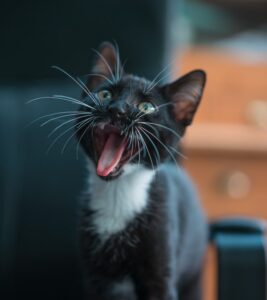
Before we delve into the reasons, it’s important to understand that meowing is a form of communication for cats. Cats don’t meow to communicate with each other, but they use meowing to communicate with their human companions. Therefore, when a cat meows, it’s usually trying to convey a message to its owner. Here are some reasons why cats meow in the morning:
- Hunger
Cats are notorious for being early risers. They are crepuscular animals, which means that they are most active at dawn and dusk. Therefore, it’s not surprising that cats often wake up hungry in the morning. If your cat is meowing in the morning, it’s likely that it’s hungry and wants you to feed it. Cats can be very persistent when they want something, and they will continue meowing until they get what they want. Therefore, if your cat is meowing in the morning, it’s a good idea to check its food bowl and make sure that it’s not empty.
Which could lead to this question,
Why does my cat wake me up at the same time every morning.
Why does my cat wake me up in the morning? Cats are masters at training us. In this case, your cat is likely waking you up early in the morning because they woke you up once before and you either fed them or gave them attention. So they continue to wake you up to keep getting that food or attention. To read more click here
My cat Peaches is actually on clockwork every day between 5 am to 6:30 am, for me to feed them there food Fancy Feast.
- Attention
Cats are social animals, and they crave attention from their human companions. If your cat is meowing in the morning, it’s possible that it’s seeking attention from you. Cats are smart animals, and they know that meowing is an effective way to get their owner’s attention. Therefore, if your cat is meowing in the morning, it’s a good idea to give it some attention and play with it for a few minutes.
- Routine
Cats are creatures of habit, and they thrive on routine. If you have established a routine with your cat, such as feeding it at a certain time in the morning, your cat may meow to remind you of that routine. Cats are very good at keeping track of time, and they will often start meowing when it’s time for their feeding or other activities. Therefore, if your cat is meowing in the morning, it’s possible that it’s trying to remind you of its routine.
- Boredom
Cats are very active animals, and they need stimulation to keep them happy and healthy. If your cat is meowing in the morning, it’s possible that it’s bored and looking for something to do. Cats are curious animals, and they love to explore their surroundings. Therefore, if your cat is meowing in the morning, it’s a good idea to give it some toys to play with or provide it with a scratching post to keep it entertained.
- Medical Issues
Sometimes, cats meow excessively because of medical issues. If your cat is meowing in the morning and you have ruled out all the other reasons, it’s possible that it’s in pain or discomfort. Cats can’t tell us when they are feeling sick, so it’s important to observe their behavior and look for signs of illness. If your cat is meowing excessively, it’s a good idea to take it to the vet for a check-up.
In conclusion, cats meow in the morning for various reasons. If your cat is meowing in the morning, it’s important to try and understand the reason behind its behavior. By understanding your cat’s needs and desires, you can provide it with the attention and care it needs to be happy and healthy. Remember, cats are unique creatures, and they each have their own personalities and preferences. What works for one cat may not work for another, so it’s important to observe your cat’s behavior and adjust your approach accordingly.
One thing to keep in mind is that cats are creatures of habit, and they thrive on routine. If your cat is meowing in the morning because it’s hungry or wants attention, it’s important to establish a routine that works for both you and your cat. For example, you can set a regular feeding time in the morning and make sure that your cat’s food bowl is full before you go to bed. You can also try playing with your cat for a few minutes before you go to work or providing it with toys to keep it entertained while you’re away.
Another thing to keep in mind is that cats need stimulation to keep them happy and healthy. If your cat is meowing in the morning because it’s bored, it’s important to provide it with toys and other forms of entertainment. Cats love to play, and there are many toys on the market that are designed to keep them engaged and stimulated. You can also provide your cat with a scratching post or other items to climb and explore.
It’s also important to rule out any medical issues that may be causing your cat to meow excessively. Cats can’t tell us when they are feeling sick or in pain, so it’s important to observe their behavior and look for signs of illness. If your cat is meowing excessively and you have ruled out all other possible causes, it’s a good idea to take it to the vet for a check-up.
To learn more about Why do cats meow in the morning and more cat’s language
This content may contain links to products, software and services. Please assume all such links are affiliate links which may result in my earning commissions and fees.
Is Your Cat A Sprayer? Are You At Your Wits’ End?
You’re a cat owner, and like any cat owner you love your cat. Cats are lovely, playful, and funny companions. They seem to be the perfect pets.
Until they’re not.
Your furniture gets refaced. Your white walls get recolored. And you’re clean windows are gone. Your beloved furry companion has turned into a four-legged mobile room freshener, but with an unpleasantly distinct aroma: urine.
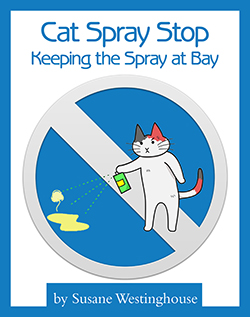 Your cat is a sprayer and doesn’t seem to care about it. You, on the other hand, feel powerless.
Your cat is a sprayer and doesn’t seem to care about it. You, on the other hand, feel powerless.
What’s worse, your family is increasingly worried. “Is she sick?” “Should we bring the vet in?” “What needs to be done?”
There’s no denying that everyone loves her because she brings joy to all of you.
But the problem persists.
Undoubtedly, stopping a sprayer is among the most common – and challenging – thing cat owners face. You know that. But your cat doesn’t. And there’s only one way to go through this and coming out successful: training.
If you’re wondering where you should begin, what method you should follow, or which tactic is the most effective, then ask no more. The answer is right here.
Presented in the form of this very helpful guide called Cat Spray Stop, the product outlines an array of proven tactics and techniques designed to prevent your cat from spraying.
By ordering it today, your life will turn from stressful to restful, while your rooms and walls and windows will stay clean.
So What Exactly Is The Cat Spray Stop?
Cat Spray Stop is an all-encompassing guide designed to show cat owners an easy-to-read, easy-to use method to stop their cats from spraying, in a fast and efficient way. Created by Susane Westinghouse, vet and cat specialist, the product provides general guidelines and specific strategies aimed at stopping any cat from spraying, no matter how stubborn or independent he or she may be. In addition, it also includes the unique TTS method for tacking this problem that not only works in stopping the cat from spraying, but also in deterring him to do so in the future.
According to Susane Westinghouse, Cat Spray Stop is perfect for cat owners who are:
- Caring but cool-headed
- Action-oriented and able to follow through
- Able to invest a short amount of time implementing this method
- Sick and tired of constantly cleaning up the walls, windows and furniture every time the cat unleashes the smelly spray
This content may contain links to products, software and services. Please assume all such links are affiliate links which may result in my earning commissions and fees.
Inappropriate Elimination and Health Problems
Inappropriate elimination problems are often caused by – or were started by – a physical problem. The most common is this.
 If you don’t have the health problem correctly diagnosed and treated, there’s almost no chance of fixing the unwanted behavior problem. Moreover, you’re not being fair to your cat.
If you don’t have the health problem correctly diagnosed and treated, there’s almost no chance of fixing the unwanted behavior problem. Moreover, you’re not being fair to your cat.
In other words, if you have a sick cat, all the behavioral methods in the world will not do you much good. In order to address a behavior problem, your cat must be healthy.
So, let’s address the following question: What are the possibilities that a medical condition is causing your cat to avoid the litter box or spray?
The answer is simple. The chances are very high, and the reasons numerous.
Your vet may recommend urine and blood tests and an ultrasound or X-ray of the abdomen to rule out many medical possibilities before giving your cat a clean bill of health.
Your cat can’t speak, so his body must speak for him. Your vet has been trained to listen and look for the clues to what may be a pretty difficult puzzle. Your own observations are very important, too, so don’t forget to bring along your notes.
Here are a few things your veterinarian looks for:
- Urinary tract/bladder problems: A cat with urinary tract or bladder problems finds it painful to urinate because it burns. Because cats can’t think to themselves as humans do, they simply stop using the box. What’s worse, these kinds of problems may even encourage spraying.
- Medications: Your cat may be on a medication that may cause her to drink more and to urinate more volume, more frequently, or have looser stools. Either of these conditions may cause a cat to need to go before she has time to get to the litter box.
- Infectious disease: The feline leukemia virus, feline immunodeficiency virus, or feline infection peritonitis may make a cat sick enough so that the litter box ceases to be a priority.
- Noninfectious disease: Untreated diabetes can lead to an increase in the amount of urine a cat produces. In fact, more frequent urination is a symptom that veterinarians ask about when they suspect the disease. Hyperthyroidism, a disease of older cats cause by an overactive thyroid gland, also increases urine production.
- Old-age-related causes: Some cats may become a little senile as they age, so they’re not as particular about where they go. Other cats may have arthritis, making it difficult to climb in and out of a box or to access a box on a different floor of your house.
- Constipation: Stools that are difficult to pass or cannot be passed cause a great deal of discomfort, which she tries to relieve by straining to pass the stool. The result can be something that looks like diarrhea – a soft substance produced by frequent efforts to pass the stool.
- Diarrhea: Loose stools can be a problem, too, making it difficult for a cat to “hold it” until she gets to the litter box. Diarrhea is a symptom, however. The causes can vary, especially in long-term cases.
Correct diagnosis and proper treatment alone may take care of a problem with inappropriate eliminations, but not always. The cat who learned to associate the litter box with discomfort, for example, or the cat who learned it’s just as easy to go on the rug will need retraining – after the medical problem has been resolved.

This content may contain links to products, software and services. Please assume all such links are affiliate links which may result in my earning commissions and fees.
How to train an adult cat to use a litter box they don’t like
Cats are generally known to be fastidious creatures that are clean and well-groomed. They instinctively use a litter box to relieve themselves, making it easier for their owners to maintain a clean living space. However, there may be instances when your adult cat refuses to use a litter box they don’t like, making it a frustrating situation for pet owners. In this article, we’ll go through some tips and tricks to train an adult cat to use a litter box they don’t like.
Understanding the Reason for Avoidance
The first step in training a cat to use a litter box they don’t like is to identify the reason why they are avoiding it. There can be a few reasons why a cat may refuse to use the litter box, such as:
- Health issues: Your cat may be suffering from a urinary tract infection or another health issue that causes discomfort while using the litter box.
- Litter box issues: The litter box may not be the right size for your cat, or it may not be cleaned frequently enough.
- Environmental changes: If there have been changes in the household or the cat’s living environment, such as a new pet or a new home, your cat may be stressed and may refuse to use the litter box.
- Preference: Some cats may have a preference for certain types of litter or litter boxes.
Once you have identified the reason for the cat’s avoidance, you can take steps to address the issue.
Addressing Health Issues
If you suspect that your cat is avoiding the litter box due to health issues, you should take them to a veterinarian for a checkup. Your vet can diagnose and treat any health issues your cat may be experiencing, which can help to alleviate any discomfort your cat may be feeling while using the litter box.
Adjusting Litter Box Placement
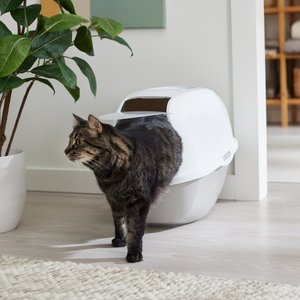 If your cat is avoiding the litter box due to its placement, you can try relocating the box to a more suitable area. Litter boxes should be placed in a quiet, private area where your cat can use it without interruption. Avoid placing the litter box near food or water, as cats prefer to keep their eating and elimination areas separate.
If your cat is avoiding the litter box due to its placement, you can try relocating the box to a more suitable area. Litter boxes should be placed in a quiet, private area where your cat can use it without interruption. Avoid placing the litter box near food or water, as cats prefer to keep their eating and elimination areas separate.
Choosing the Right Litter Box
The size of the litter box is essential to consider when training your cat to use it. A litter box that is too small for your cat may be uncomfortable, while a litter box that is too large may be difficult for your cat to access. The general rule of thumb is that the litter box should be one and a half times the length of your cat, from nose to the base of their tail.
Want to know more about litter boxes click here
If your cat is avoiding the litter box due to its size, consider investing in a new one that is more suitable for their needs. You can also try different types of litter boxes, such as ones with high sides or lids, to see if your cat has a preference.
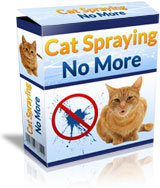
Choosing the Right Type of Litter
Cats have different preferences when it comes to litter, so it may take some trial and error to find the right type that your cat likes. There are several types of litter available, such as clay, clumping, and silica gel litter. You can try different types of litter to see which one your cat prefers.
Introducing a New Litter Box
If your cat has developed a preference for a particular type of litter box, such as an open-top or covered litter box, it may take some time to train them to use a new one. You can introduce the new litter box gradually by placing it next to the old one and gradually moving it to a new location.
If your cat is avoiding the litter box due to its newness, you can try placing some of their old litter in the new box to help them adjust. You can also try placing treats or toys near the new litter box to make it more appealing and encourage your cat to investigate it.
Using Positive Reinforcement
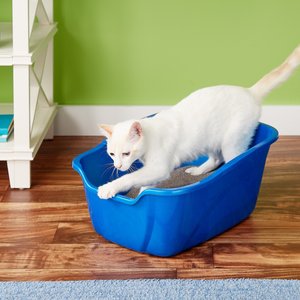 Positive reinforcement is an effective way to train your cat to use a litter box they don’t like. You can reward your cat with treats or praise every time they use the litter box correctly. This positive reinforcement can encourage your cat to continue using the litter box, making it a positive experience for them.
Positive reinforcement is an effective way to train your cat to use a litter box they don’t like. You can reward your cat with treats or praise every time they use the litter box correctly. This positive reinforcement can encourage your cat to continue using the litter box, making it a positive experience for them.
Punishing your cat for not using the litter box is not recommended as it can cause stress and anxiety, leading to further litter box avoidance.
Maintaining a Clean Litter Box
Cats are clean animals and prefer to use a clean litter box. If the litter box is dirty or has a strong odor, your cat may avoid using it. It’s important to clean the litter box regularly, at least once a day, and replace the litter every week.
If you have multiple cats, you should have one litter box per cat, plus one extra. This can reduce the competition for the litter box and make it easier for each cat to find a clean litter box.

Conclusion
Training an adult cat to use a litter box they don’t like can be a frustrating experience, but with patience and persistence, it can be done. It’s important to identify the reason for the litter box avoidance and address the issue accordingly. This can involve adjusting the litter box placement, choosing the right litter box and litter, and using positive reinforcement.
Maintaining a clean litter box is essential to ensure that your cat continues to use it. If you’re having trouble training your cat to use the litter box, consider consulting with a veterinarian or a professional animal behaviorist. With the right training and care, your cat can learn to use the litter box they don’t like, making it easier for you to maintain a clean and healthy living environment.
This content may contain links to products, software and services. Please assume all such links are affiliate links which may result in my earning commissions and fees.
Cat Spraying No More Review
Cat spraying no more is a comprehensive guidebook designed to help cat owners deal with the issue of cat spraying. This problem can be frustrating for both the cat and the owner and can lead to a strained relationship between them. However, the good news is that this problem can be resolved with the right techniques and strategies, and this is exactly what Catsprayingnomore.com offers.
 The guidebook is written by Sarah Richards, a cat behavior specialist with years of experience in helping cat owners solve their pet’s behavioral problems. The ebook is well-structured and organized, making it easy to read and follow. It is also designed to be user-friendly, with clear step-by-step instructions and helpful illustrations.
The guidebook is written by Sarah Richards, a cat behavior specialist with years of experience in helping cat owners solve their pet’s behavioral problems. The ebook is well-structured and organized, making it easy to read and follow. It is also designed to be user-friendly, with clear step-by-step instructions and helpful illustrations.
The book begins by explaining the reasons why cats spray, including territorial marking, anxiety, and stress. It then goes on to provide an in-depth analysis of each of these causes, along with practical tips on how to identify them in your own cat. This section is particularly helpful, as it helps the reader understand the underlying reasons for their cat’s spraying behavior.
One of the standouts features of Catsprayingnomore.com is the emphasis on prevention. Sarah explains that preventing the problem from occurring in the first place is much easier than trying to solve it once it has developed. She provides practical advice on how to create a calm and stress-free environment for your cat, including tips on litter box placement, environmental enrichment, and how to create a routine. This was especially helpful for me and my cat.
What I got out of Cat Spraying No More and my review.
Note I had this problem when I moved to my current residents, I have moved with my cat and it seems like he did spray out of his little box because he wanted to mark his territory against the other cat that my roommate had. He would pee on things he knew what was mine, in this email book it gave me good strategies to overcome this.
The next section of the book focuses on the various methods that can be used to stop cat spraying. This includes both natural remedies and products that can be purchased from pet stores. Sarah provides a thorough analysis of each of these methods, along with their pros and cons. This information is helpful for the reader to make an informed decision about which method to use.
Overall, Catsprayingnomore.com is an excellent resource for any cat owner struggling with the problem of cat spraying. The book is well-written, easy to follow, and provides a comprehensive overview of the problem and its solutions. It is clear that Sarah Richards is an expert in this field, and her knowledge and experience shine through on every page of the book.
Other Reviews of Cat Spraying No More
“YOUR TECHNIQUES HAVE WORKED AMAZINGLY WELL”
 “I adopted Tigger from a rescue home 18 months ago. I tried everything to try to encourage him to wee in the litter tray but nothing I did worked – until a friend showed me your website! I am so grateful for the work you have put in here Sarah. Your techniques have worked amazingly well. Tigger hasn’t weed outside the little box for weeks now. Long may it continue!”
“I adopted Tigger from a rescue home 18 months ago. I tried everything to try to encourage him to wee in the litter tray but nothing I did worked – until a friend showed me your website! I am so grateful for the work you have put in here Sarah. Your techniques have worked amazingly well. Tigger hasn’t weed outside the little box for weeks now. Long may it continue!”
Barbara Grayson & Tigger – Leamington Spa, UK

“I WAS AMAZED AT HOW QUICKLY IT WORKED!”
 “My mom and dad were going crazy and about to give our cat away because of her constant peeing and spraying. The house smelt horrible and they didn’t have a clue how to stop it. I love Winnie and couldn’t bear to give her up so I promised I would help. I found Sarah’s website and told my mom about it. She said if this didn’t work, that was it. She’d have to give her away. But it did! I was amazed at how quickly it worked, and how easy the methods were to put into practice. It’s now been 2 months and Winnie hasn’t gone outside the litter box at all. Thank you so much Sarah!”
“My mom and dad were going crazy and about to give our cat away because of her constant peeing and spraying. The house smelt horrible and they didn’t have a clue how to stop it. I love Winnie and couldn’t bear to give her up so I promised I would help. I found Sarah’s website and told my mom about it. She said if this didn’t work, that was it. She’d have to give her away. But it did! I was amazed at how quickly it worked, and how easy the methods were to put into practice. It’s now been 2 months and Winnie hasn’t gone outside the litter box at all. Thank you so much Sarah!”
Shelley Davison & Winnie – Florida, US

“I WOULD HAVE HAPPILY PAID HUNDREDS OF DOLLARS FOR THIS!”
 “Bravo Sarah! I had no idea just how simple it was to coax Arthur back to his litter box, and most of all, STOP him from peeing anywhere else in the house! It all started when we moved house 6 months ago and I’ve been at a loss as to what to do. I’ve received all sorts of ‘expert’ advice from vets, and none of it has worked. These techniques have been so easy to implement, and so cheap too! I would have happily paid hundreds of dollars for the peace of mind that this guide has given me.”
“Bravo Sarah! I had no idea just how simple it was to coax Arthur back to his litter box, and most of all, STOP him from peeing anywhere else in the house! It all started when we moved house 6 months ago and I’ve been at a loss as to what to do. I’ve received all sorts of ‘expert’ advice from vets, and none of it has worked. These techniques have been so easy to implement, and so cheap too! I would have happily paid hundreds of dollars for the peace of mind that this guide has given me.”
Beverley Wyatt & Arthur – New Jersey, US

“THESE TECHNIQUES HAVE BEEN AN ABSOLUTE GODSEND”
 “I love my cat Bruno but I was struggling to cope with his behaviour. Whenever I would get home from work I would have to spray and mop the kitchen floor and then check all around the house for anything else he might have done. I was lucky if the cleaning took me less than 30-40 minutes. This set of techniques have been an absolute godsend. Bruno seems so much happier, and I definitely am! I really cannot thank you enough.”
“I love my cat Bruno but I was struggling to cope with his behaviour. Whenever I would get home from work I would have to spray and mop the kitchen floor and then check all around the house for anything else he might have done. I was lucky if the cleaning took me less than 30-40 minutes. This set of techniques have been an absolute godsend. Bruno seems so much happier, and I definitely am! I really cannot thank you enough.”
Lucy Benjamin & Bruno – Essex, UK
If you’re struggling with cat spraying, I highly recommend getting this Cat Spraying No More ebook.
